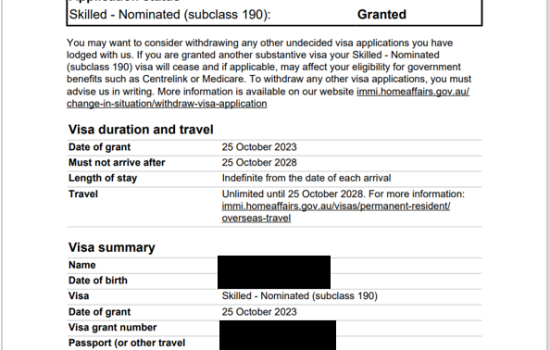Skilled visas allow migrants to fill skill shortages in Australia on temporary or permanent visas.
TYPES OF SKILLED VISAS
What is a skilled visa?
A skilled visa is a type of visa that is part of the ‘skilled stream’ of Australia’s migration program. Skilled visas are designed to attract migrants to fill skills shortages in Australia.
A skills shortage is where there are not enough Australian workers available and may affect certain occupations or certain regions of Australia.
Skilled visas can be temporary or permanent visas. Australian skilled visas include:
- Employer Nomination Scheme (ENS) visa (subclass 186)
- Regional Sponsored Migration Scheme (RSMS) visa (subclass 187)
- Skilled Independent visa (subclass 189) – Points-tested stream
- Skilled Nominated visa (subclass 190)
- Permanent Residence (Skilled Regional) visa (subclass 191)
- Training visa (subclass 407)
- Temporary Skill Shortage (TSS) visa (subclass 482)
- Temporary Graduate visa (subclass 485) – Graduate Work
- Skilled Regional (Provisional) visa (subclass 489)
- Skilled Work Regional (Provisional) visa (subclass 491)
- Skilled Employer Sponsored Regional (provisional) visa (subclass 494)
What are the Medium and Long-term Strategic Skills List (MLTSSL) and Short-term Skilled Occupation List (STSOL)?
The Medium and Long-term Strategic Skills List (MLTSSL) and Short-term Skilled Occupation List (STSOL) are both skilled occupation lists which include occupations that are in demand in Australia. It can be confusing to understand the differences between the two lists so here we will explain some of the key differences.
If your occupation is on the MLTSSL there are more Australian visa options available to you. The MLTSSL is used for:
- employers to source highly skilled workers for up to 4 years (through the Temporary Skill Shortage visa (subclass 482), with eligibility to apply for permanent residency after 3 years (through the Employer Nomination Scheme visa (subclass 186))
- the permanent skilled visa, the Skilled Independent visa (subclass 189)
- the Skilled Nomination visa (subclass 190)
- the Skilled Work Regional (Provisional) (Family Sponsored) visa (subclass 491)
- the Skilled Work Regional (Provisional) (State or Territory government agency nominated) visa (subclass 491)
- the Temporary Graduate visa (subclass 485)
If your occupation is on the STSOL then there are more limited visa options available to you, and you will generally have to find an employer or state to sponsor your application. It is also harder to obtain permanent residency if your occupation is on the STSOL. The STSOL is used for:
- employers to source temporary skilled workers for up to 2 years, with a possible extension of an additional 2 years (through the Temporary Skill Shortage visa (subclass 482)), with no eligibility for permanent residency
- the Skilled Nomination visa (subclass 190)
- the Skilled Work Regional (Provisional) (State or Territory government agency nominated) visa (subclass 491)
Are skilled visas temporary residence (TR) visas or permanent residency (PR) visas?
Skilled visas can be temporary residence (TR) or permanent residency (PR) visas and many of the skilled temporary residence visas have a pathway to permanent residency.
Generally, skilled migrants prefer to obtain a permanent visa from the outset and our migration lawyers will always advise you on the best pathway to permanent residency, whether you are eligible at the outset for PR or if you need to apply for a temporary visa first.




